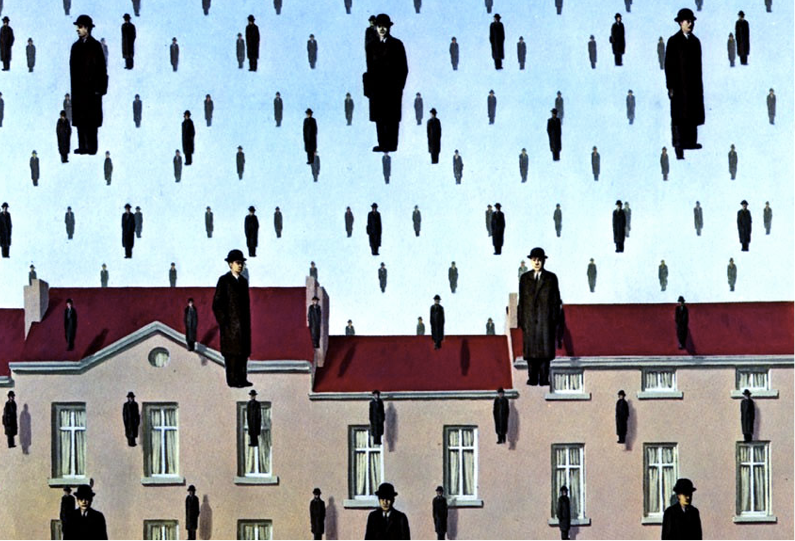Anxiety labels and emotional needs

I have a print of the painting Golconda by Belgian surrealist artist René Magritte (1898 – 1967) framed on my bedroom wall at home.
The painting is composed of men, nearly identical to each other, all dressed in bowler hats and floating in the air. It always makes me think about what it means to blend into the crowd, or to hide in plain sight.
I can be an anxious person. This anxiety comes from feeling that I don’t have a good enough reason to stand out or, when it comes to things like writing my blog, anything worth saying.
I think that anxiety, and my own feelings of anxiety (in part) come from a place where we all feel unable to reflect our true selves and ideas to other people. This is because of the labels we place upon ourselves, and more so the labels we feel are forced upon us by other people and society.
I’ve come to realise that this has shaped how I think about and approach design. Here’s the biggest lesson: don’t try to categorise people.
I instinctively don’t like any type of design or research process that explicitly tries to categorise people. For example, the creation of personas (I’ve written about why I don’t like personas before), especially the marketing or analyst-led type segmentation that leads to labelling people with terms like ‘millennials’ or ‘grey voters’.
Labels tell people that they don’t matter as individuals because they stop us treating people as individuals. They force people to adopt and conform to a story that might not be who they are or what they could be.
I saw the same thing happening with government policy. People being forced to adopt an unambiguous story. Being told which category they belong to. People given labels and stories such as:
- job seeker
- disabled
- homeless
- leaver or remainer (Brexit reference).
In adopting these stories people start to lose their own sense of identity, and their voice. Any loss of feeling of identity leads to anxiety (at least in my experience).
These are all labels given to people by other people. They fail to understand, or help us to understand, emotional needs (I also wrote about emotional needs recently) – the anxiety and the stress that people experience when dealing with the most pressing situations happening in their lives.
As a designer or policy maker the biggest danger when we’re designing for people is making the assumption that everyone is the same. It’s easy to think about your user or customer without thinking about individual and emotional needs.
If I’ve learned one thing throughout my design career, it’s the power of individual stories and our ability to listen and better understand who people are and what really matters in their lives.
The biggest emotional need I think we might be dealing with in public sector design is anxiety status (and the effect this has on all of us). The challenge is to not lose sight of the individuals that use our products and services.
We all have a genuine need to be treated and thought of as individuals. And we all have a story that’s worth hearing.
This is my blog where I’ve been writing for 20 years. You can follow all of my posts by subscribing to this RSS feed. You can also find me on Bluesky and LinkedIn.